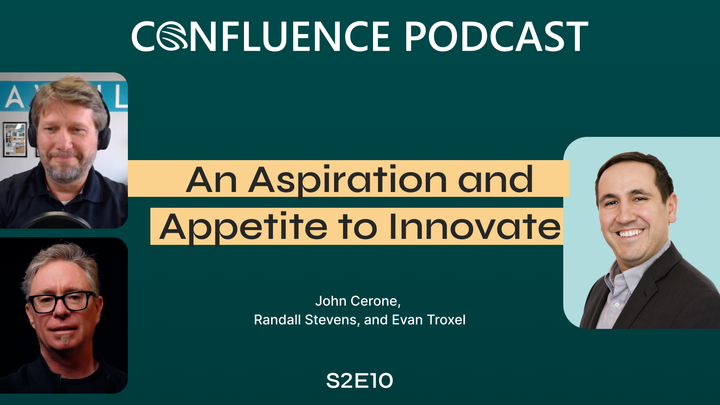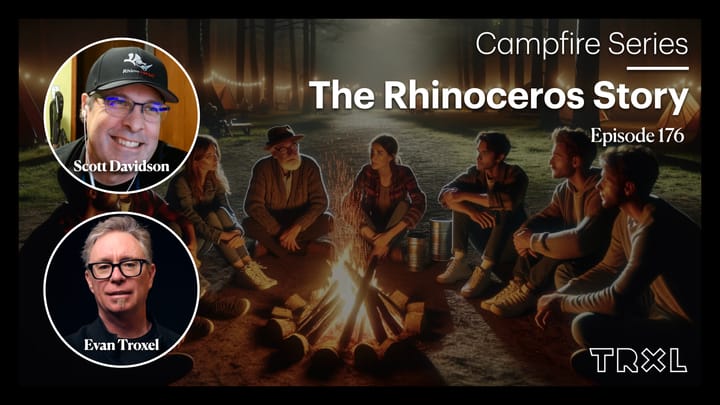SHoP Architects: Using Lightweight Models as a Foundational Framework
SHoP Architects revolutionizes architectural practice with their lightweight modeling approach, allowing multiple stakeholders to collaborate in real-time while maintaining design flexibility and reducing technical debt.
In Randall’s and my recent interview with John Cerone on an episode of the Confluence Podcast, I was particularly interested in learning about SHoP Architects’ concept of using lightweight models as a foundational framework onto which high-fidelity components are hosted during the design process. This strategy offers several strategic and operational insights for AEC firms looking to modernize their practices.
There is often pressure to get into BIM early or use it as a “design tool” for the sake of efficiency. But there is a trade-off: Traditional BIM tools like Revit often force designers into premature specificity, requiring detailed component decisions far too early in the design process. When architects must define specific wall assemblies, MEP systems, or structural elements during initial design phases, it creates a rigid model that becomes increasingly resistant to change. Each modification ripples through the entire model, requiring extensive manual updates to maintain consistency. This “early commitment” approach not only stifles design exploration but also creates unnecessary technical debt—the more detailed the early-stage model becomes, the more labor-intensive it is to pivot or respond to evolving project requirements. This stands in stark contrast to SHoP's lightweight modeling approach, which preserves design flexibility until component specificity is actually needed.
1. Early Flexibility, Late Precision
By starting with a lightweight model (geometry, surfaces, spatial relationships), SHoP maintains design agility early in the process. This allows:
- Faster iteration without heavy overhead
- Rapid decision-making with stakeholders
- The ability to incorporate client and jurisdictional feedback before the model becomes “brittle” with detail
As the project matures, precision increases naturally through the hosting of detailed components—materials, fasteners, assemblies—by fabricators, consultants, and manufacturers.
2. Decoupling Design and Execution
The hosted systems model allows different parties (e.g., contractors, fabricators, engineers) to work asynchronously and in parallel:
- Architects define “what” and “where”
- Fabricators define “how” and “with what”
- All parties work within the same spatial model
This approach decouples design authorship from fabrication authorship—without compromising the alignment between them.
3. Real-Time Constructability Feedback
With fabrication systems being overlaid onto the design model, feedback loops on:
- Material availability
- Assembly constraints
- Tolerance issues
- Cost implications
…can happen in real time, not weeks or months later during documentation or shop drawing review.
This supports early design optimization that reflects actual fabrication realities.
4. Mass Customization and Rationalization
Once high-fidelity systems are “hosted” to the lightweight wireframe, the model becomes a live dashboard for rationalization tools:
- Automatically group parts by tolerances (standardize or repeat)
- Identify opportunities for kit-of-parts or prefab
- Run performance simulations (energy, structure, egress)
This enables mass customization—complex geometry with underlying system simplicity.
5. Digital Ecosystem Enablement
The lightweight model serves as a common digital environment—a sort of operating system—on which multiple stakeholders can plug in their tools, apps, and simulations. It promotes:
- Use of APIs and cross-platform interoperability
- Real-time data overlays (e.g., cost, schedule, performance)
- Better digital twin readiness for operations and FM
6. Increased Trust Through Transparency
When stakeholders can directly “host” their components, there’s:
- Less need for RFIs and interpretive translations
- More accountability
- A shared understanding of scope and sequencing
This reduces adversarial posturing and builds trust through shared authorship.
7. A Path Toward Continuous Delivery
This modeling strategy is incremental, modular, and evolvable—key characteristics of continuous delivery in software. It supports:
- Iterative, milestone-based development
- Scope prioritization (build the core, refine the edges)
- Versioning and rollback of design features
Summary of Values
| Benefit | Traditional Workflow | SHoP’s Lightweight/Hosted Model Approach |
|---|---|---|
| Design Iteration | Slow & linear | Fast & parallel |
| Fabrication Integration | Late-stage | Embedded early via system hosting |
| Risk & Rework | High | Reduced through real-time constructability |
| Stakeholder Coordination | Fragmented | Centralized in a shared spatial environment |
| Cost & Schedule Control | Reactive | Proactive through simulation and rationalization |
| Innovation Enablement | Limited | High—supports mass customization and prefab |
If you’re leading an AEC firm and considering how to evolve, adopting SHoP’s lightweight model + hosted system strategy is a compelling first move. It invites collaboration, reduces downstream surprises, and makes space for innovation—without sacrificing control or clarity.



